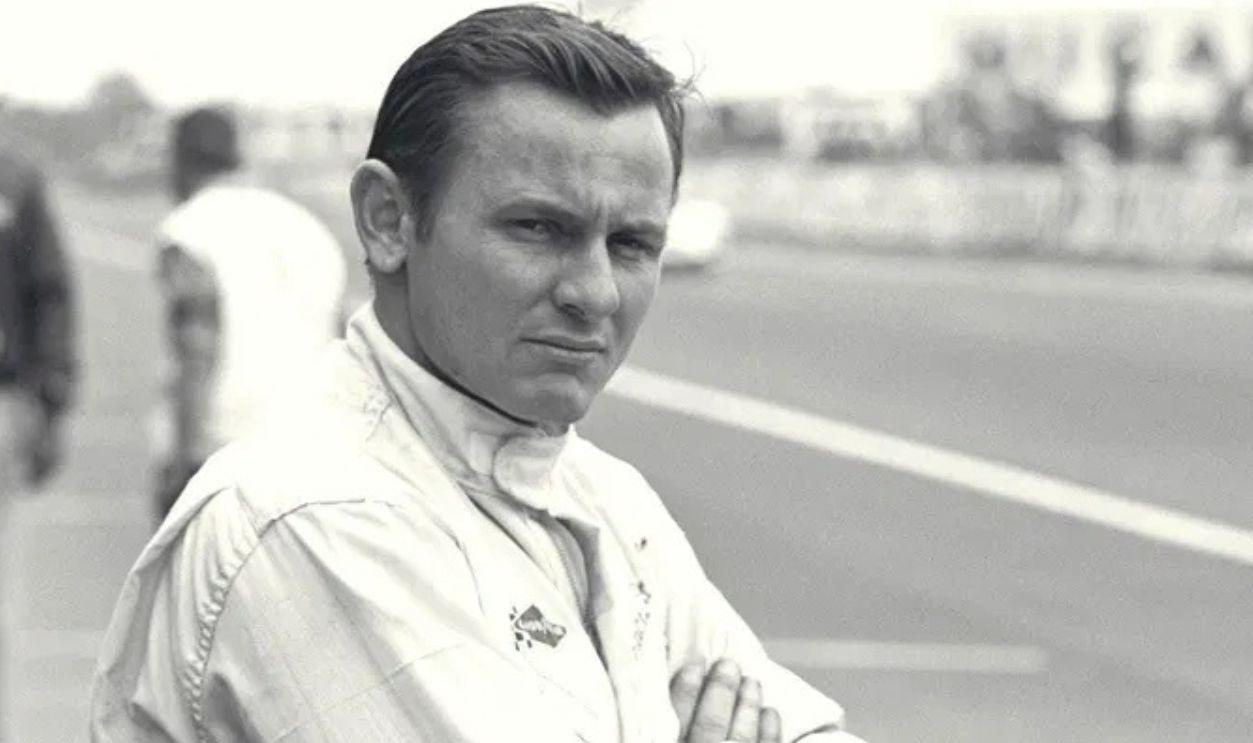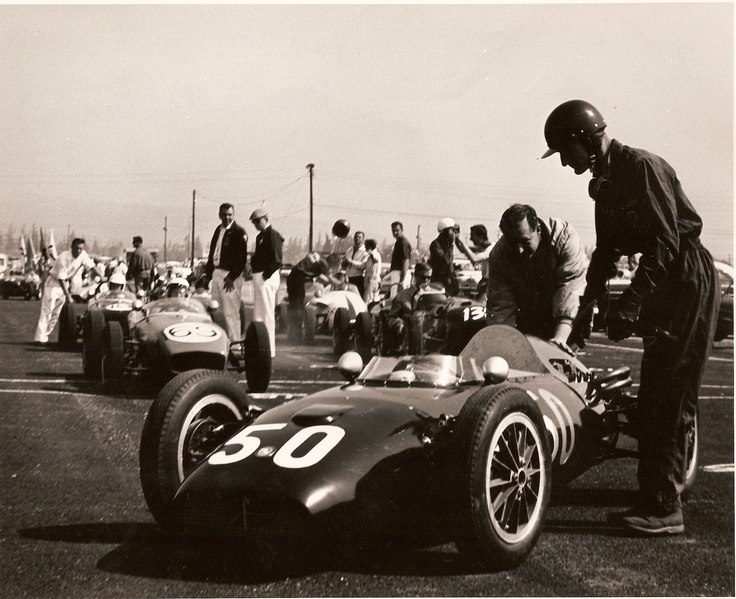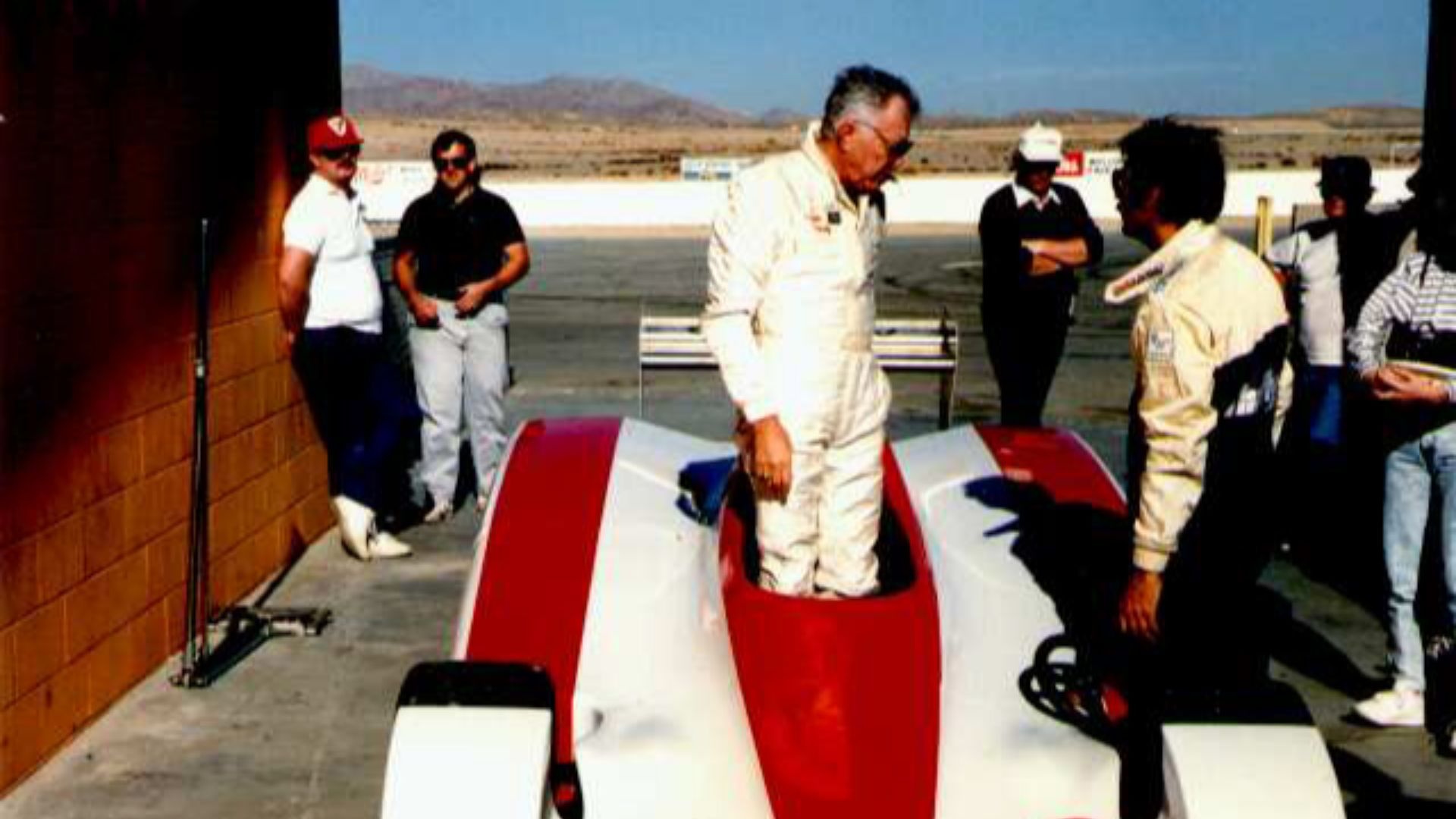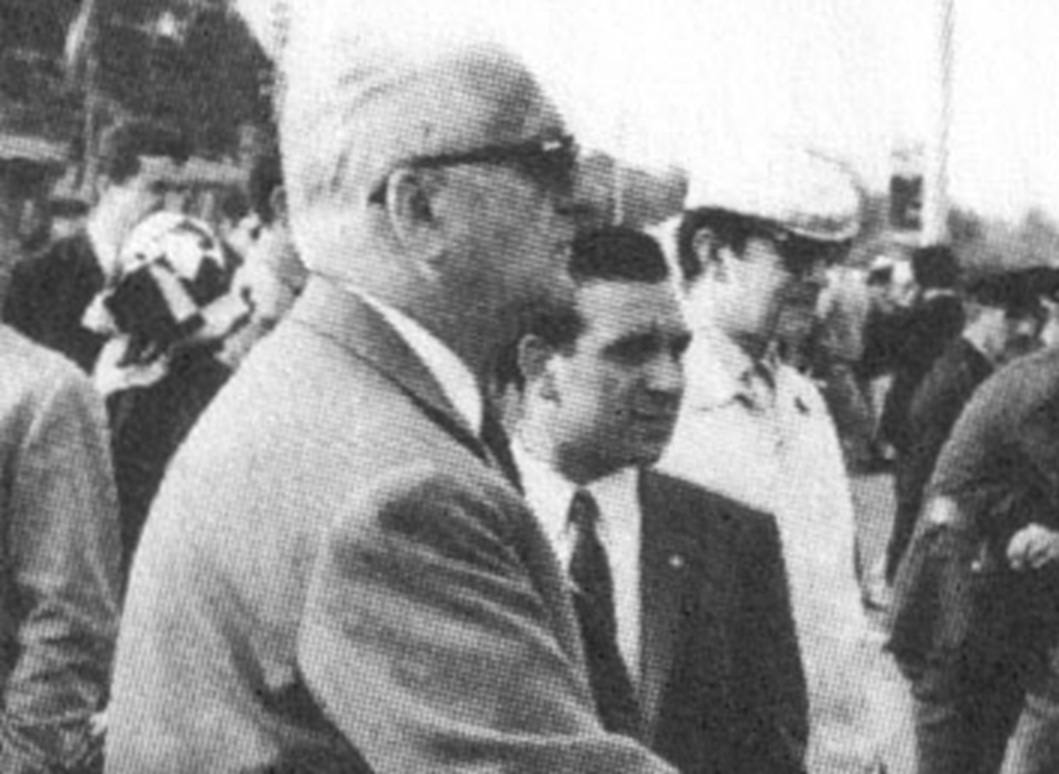Detroit Grit X Italian Fire
Enzo snubbed Henry. Carroll answered. And what followed was a blood feud written in oil and gasoline, not ink. Le Mans was the battlefield, but pride and power were the real war machines.

Enzo Ferrari’s Cold Rejection
In 1963, Ford offered to buy Ferrari. Enzo agreed—then backed out, furious over losing control of his racing team. Henry Ford II didn’t just lose a deal. He felt humiliated. That night, he ordered a race car built to break Ferrari’s legacy, not just its lap times.
 Rainer W. Schlegelmilch, Wikimedia Commons
Rainer W. Schlegelmilch, Wikimedia Commons
Carroll Shelby Was The Secret Weapon
Shelby had the Cobra. He had a grudge. He’d already beaten Ferrari’s V12s with raw V8 muscle. And when Ford called, he didn’t ask how fast—he just asked when. Shelby brought his ragtag crew, broke every rule, and turned the GT40 into a weapon with attitude and torque.
 Sherry Lambert Stapleton, CC BY-SA 2.0, Wikimedia Commons
Sherry Lambert Stapleton, CC BY-SA 2.0, Wikimedia Commons
The GT40 Started As A Disaster
Early GT40s looked like winners but couldn’t last a race. Those cars overheated and scattered parts at speed. Le Mans in 1964 and '65 was a total embarrassment. Yet beneath that chaos lived a car with the right bones. Shelby just needed to strip out the bureaucracy and the British politeness.
 Ford GT40 1964 Le Mans by AACA Library & Research Center
Ford GT40 1964 Le Mans by AACA Library & Research Center
Ferrari’s Reign At Le Mans Was Personal
Ferrari didn’t build cars to sell them. He sold them to fund his racing dreams. Between 1960 and 1965, Ferrari ruled Le Mans. Each win felt hand-forged, not manufactured. Enzo chased immortality at 7,000 rpm. For him, losing was betrayal.
 David Merrett from Daventry, England, Wikimedia Commons
David Merrett from Daventry, England, Wikimedia Commons
Ken Miles Was The Beating Heart
Ken Miles cared about one thing: perfection. He was quick and better than anyone else in a GT40. Shelby leaned on him, but Ford didn’t trust him. Yet, when the tires burned and the clock ticked, Miles made that machine dance like it had a soul.
 Raycrosthwaite, CC BY-SA 3.0, Wikimedia Commons
Raycrosthwaite, CC BY-SA 3.0, Wikimedia Commons
Ford’s Budget Was Ruthless And Unheard Of
Most teams raced with grit and innovation. Ford brought a blank check. The GT40 program cost over $25 million (that's more than NASA spent to reach orbit per mile). They tested in wind tunnels, airfields, and deserts. “Whatever it takes,” said Ford. Translation: Ferrari would drown in dollars or die trying.
 Target 200 (GT40) - 1964 by FordHeritage
Target 200 (GT40) - 1964 by FordHeritage
Ferrari Never Took The Humiliation Lightly
Le Mans 1966 was a public shaming. Ferrari watched as Ford swept the podium, then staged a photo op like a corporate conquest. Enzo was livid and called it vulgar. To him, racing was art, but Ford turned it into advertising.
 24 Hours of Le Mans 1966 (24 Heures Du Mans Goodyear) by LEMANSCENTER
24 Hours of Le Mans 1966 (24 Heures Du Mans Goodyear) by LEMANSCENTER
The 1-2-3 Finish Sparked Controversy
Ken Miles dominated the '66 race. Then, under orders, he slowed for a staged finish. But that timing quirk handed the win to another Ford driver. Miles didn’t complain. He just stepped out of the car. No trophy ever came because ten weeks later, during testing, he died.
 Best Scene of Ford v Ferrari 2019 by Cine Extras
Best Scene of Ford v Ferrari 2019 by Cine Extras
Ferrari’s Road Cars Got Better Because Of It
The pain of Le Mans sharpened Ferrari. In the decade after Ford’s blitz, Ferrari built louder and angrier road cars. The Daytona snarled at American muscle, and the Dino seduced the mid-engine world. These were Enzo’s reply letters, written in revs.
Ford Won The War But Left The Battlefield
After four Le Mans victories, Ford walked away. The point was made, and the weapon was retired. But Ferrari kept showing up—losing, learning, and obsessing. Ford’s campaign was vengeance, and even decades later, Ferrari still races like it’s personal. Because, for Enzo, it always was.
 Brian Snelson from Hockley, Essex, England, Wikimedia Commons
Brian Snelson from Hockley, Essex, England, Wikimedia Commons
The GT40 Mk II Was Built To Break
Forget finesse. The Mk II was brute force dressed in sheet metal. Shelby's team shoved a 7.0-liter V8 into the lightweight chassis, then reworked brakes and aerodynamics with race-born aggression. Ferrari called it crude, but the stopwatch called it something else: unbeatable.
Le Mans 1967 Became A US Showdown
By 1967, Ford had more than Ferrari to worry about as the battle shifted inward. Ford’s Detroit brass clashed with Shelby’s California rebels. Even the driver lineup caused friction. Dan Gurney and A J Foyt—two American legends—drove the Mk IV to victory. That year, Italy never stood a chance.
 Sandypineman, Wikimedia Commons
Sandypineman, Wikimedia Commons
The Mk IV Was Banned For Being Too Fast
The GT40 Mk IV hit 213 mph on the Mulsanne, which terrified organizers. It was too heavy and too dangerous. After its crushing win in 1967, the rules changed. Ford’s monster was outlawed. In just one race, the Mk IV became a myth.
 Nathan Bittinger from Rochester, NY, USA (uploaded by Micap), Wikimedia Commons
Nathan Bittinger from Rochester, NY, USA (uploaded by Micap), Wikimedia Commons
Ferrari Responded With The 330 P4
Then came the P4, which wasn’t just Ferrari’s comeback attempt—it was their Mona Lisa of motorsport. Low and surgically engineered, it nearly stole Le Mans in 1967. Ferrari fans saw it as a rolling redemption arc. It didn’t win the war, but it proved Ferrari could still build soul into speed.
 Marty B from United States of America, Wikimedia Commons
Marty B from United States of America, Wikimedia Commons
Shelby’s Crew Slept In The Garages
Shelby’s mechanics lived at the track, tuning carbs by flashlight and welding frame rails between sandwiches. One story claims they poured Coke into a gearbox to make it last one more stint. They were streetfighters with socket wrenches. They wore grease instead of suits.
 Jason1281art, Wikimedia Commons
Jason1281art, Wikimedia Commons
Ferrari’s Racing Strategy Was Ruthlessly Elegant
While Ford blitzed with brute power, Ferrari countered with choreography. Their pit stops were rehearsed like ballet. Drivers were swapped with stopwatch precision, and fuel loads were calculated in grams. Where Ford made war, Ferrari made poetry (very European of them). Sometimes, that poetry came second, but it always looked better crossing the line.
Dan Gurney Invented The Champagne Tradition
After his 1967 win, Dan Gurney stood on the podium and did something new. He shook his champagne bottle and sprayed it into the crowd. It was spontaneous and defiant. That single act became racing’s most famous ritual. Ferrari didn’t invent it. Ford’s cowboy driver did.
 LeMans Victory in 1967 Dan Gurney Celebrates with Champagne by King Rose Archives
LeMans Victory in 1967 Dan Gurney Celebrates with Champagne by King Rose Archives
Ferrari Nearly Partnered With Fiat To Regroup
After the sting of Le Mans, Enzo looked for allies. In 1969, he struck a deal with Fiat to secure funding without losing racing control. Critics called it a sellout, but Enzo saw it as survival. It turned out great because Ferrari kept racing and mattering.
 Reg Lancaster, Wikimedia Commons
Reg Lancaster, Wikimedia Commons
The Battle Birthed An American Performance Era
Muscle cars existed before Le Mans, but Ford’s win supercharged the culture. Suddenly, American V8s weren’t just for straight-line glory. “Race on Sunday, sell on Monday” wasn’t a slogan anymore—it was gospel. The Mustang GT350 and GT500 were born from this war’s aftershock.
Ferrari’s Revenge Took Years But Landed Hard
In 1970, Ferrari finally won Le Mans again with the 512S. It was quiet, almost solemn. But it marked a return to form. Enzo didn’t need fireworks, just the checkered flag. He knew time would make his cars immortal. However, Ford had already packed up.
 Brian Snelson, Wikimedia Commons
Brian Snelson, Wikimedia Commons
Le Mans Became Ford’s Legacy And Ferrari’s Lifeblood
Ford built the GT40 to win; Ferrari built everything to race. And that’s the difference. While Ford walked away after four wins, Ferrari stayed decade after decade. Their losses hurt, and their wins mattered. For Ferrari, Le Mans was survival.
Hollywood Turned The Rivalry Into A Myth
Ford v Ferrari reignited the feud for a new generation. While dramatized, the core was real: pride and brilliance. The film made Ken Miles a household name. It reminded gearheads everywhere that some rivalries aren’t about brands but about the people behind the wheel.
 Chernin Entertainment, Ford v Ferrari (2019)
Chernin Entertainment, Ford v Ferrari (2019)
The GT40 Still Commands Millions
Today, original GT40s fetch $4–$10 million at auction. Not just because they won but because they changed the course of motorsport. Each one is a rolling time capsule: loud and utterly American. They weren’t built to last forever. They just did it anyway.
Ferrari Still Refuses To Build A “GT40 Killer”
When asked why they never built a modern GT40 rival, one exec replied: “We race the future”. It’s telling. While Ford recreated the GT40 in retro form, Ferrari kept looking ahead. Their vengeance was evolution because they're not one for chasing ghosts.
 Jiri Sedlacek, Wikimedia Commons
Jiri Sedlacek, Wikimedia Commons
Racing Was Never The Same Again
Before 1966, Le Mans belonged to Europe. After Ford’s war campaign, everything changed. The idea that a brash outsider could buy victory rewrote the rules. Racing wasn’t just for romantics anymore—it was corporate. Tactical and mostly cold. But isn’t this the beauty of it?














